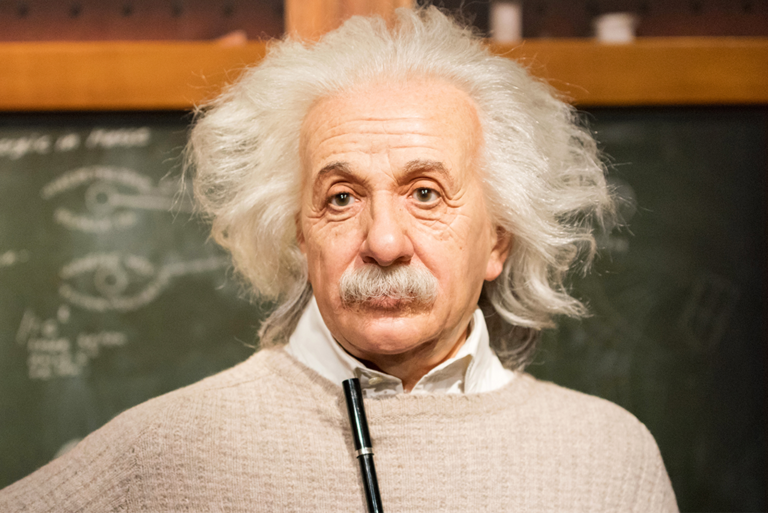Today is the anniversary of one of the biggest discoveries in the history of science: Albert Einstein’s theory of general relativity, published on May 11, 1916. General relativity transformed our understanding of gravity and forever changed the way we look at space.
What is Gravity?
Simply put, gravity is an invisible force that pulls objects to each other. For example, if you hold up a pencil and let it go, gravity will pull it to the ground. Gravity is also what holds you on the ground. Without gravity, you — and everything else — would float away.
It may sound simple, but gravity is way more complex than it seems.
Where Does Gravity Come From?
Anything with mass has gravity. Mass is the quantity of matter in an object or body. The more mass something contains, the more gravity it also contains. Earth has a strong enough gravitational pull to keep the Moon in orbit because it has a lot of mass. You also have mass, but your mass is a very tiny fraction of the planet’s mass.
Your mass interacting with Earth’s mass determines your weight. If you were to weigh yourself on the moon, which has only 1.2% of Earth’s mass and, therefore, very little gravity, you would weigh much less than you do here. For this reason, if you were to jump up on the moon’s surface, you would float to the ground rather than fall!
What is Einstein’s Theory of General Relativity?
General relativity is a theory that gravity is geometric. Rather than simply being a force that draws objects to each other, as mathematician and physicist Isaac Newton first theorized in 1687, Einstein’s theory takes gravity a step further. Einstein determined that gravity is really a curving or warping of space. The bigger an object is, the more it bends space around it.
According to general relativity, planets warp space and time around themselves. So, when you drop a pencil, it isn’t simply falling to the ground. Rather, it falls towards Earth’s center because Earth’s huge mass is pulling space towards itself.
Why is General Relativity Important?
From black holes to the Big Bang—a popular theory for how the universe began— general relativity has transformed the way we understand space. Want to learn more about general relativity? Check out these resources from IEEE TryEngineering.
- Pendulum Time: This lesson plan is appropriate for ages 8-18.
- Pendulum Lab: This game allows students to discover what factors affect the swing of a pendulum.



